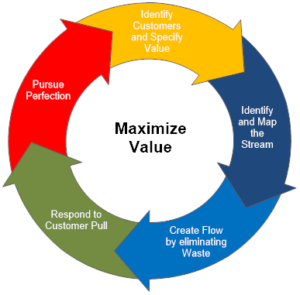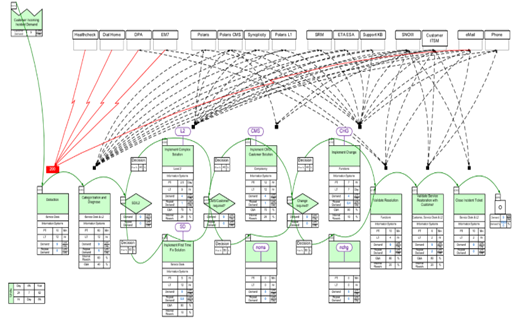As a Managed Services organization, Dell EMC takes the quality of the services we deliver to our customers very seriously. Over the years we have developed best-in-class service delivery practices for the technologies we support, not only for our own products, but also for a variety of technologies available in the market today.
Our approach to service delivery includes a very strong and skilled set of Professional Service Managers who are tasked with influencing our operations across the globe in the utilization of Dell EMC Best Practices for achieving proactive support and sustaining our internal Continual Service Improvement cycle.
In a previous blog I’ve discussed the challenge of how to get Better, Faster and Cheaper IT services, particularly around Cloud Computing. The challenge is real!
Continuous Improvement
Whether you are part of an external Service Delivery organization like ours, or a member of an internal Service Delivery team, I’m sure we share the same challenge. We aim to deliver best-in-class services to our customers around the globe and across a variety of different industries. We are tasked with maximizing delivery operations with a healthy contribution to our bottom line by making continuous improvement and reducing service cost to enable sustainable growth. Our customers, as well as your internal customers, are demanding more for less!
Within the highly competitive environment our organizations are facing every day, business disruptions are simply not tolerated. Our customers and their businesses have developed a high level of dependency for the technologies we support. Cutting cost by reducing service levels is simply not enough. Compromising service quality could be a very short term policy but won’t pay over time.
Reaching our target requires a delicate balancing act of managing cost, efficiency and capacity of the activities and processes we execute every day in our service delivery. This delicate balancing act, should be performed in such a way that service quality is not compromised and the delivery of value to our customers is maintained and increased over time.
Extreme Cost Optimization
According to the Technology Services Industry Association (TSIA) in a paper by Thomas E. Lah published in February 2018, one of the top seven key industry trends is what he calls “Extreme Cost Optimization.” It’s a clear trend for service providers, driven by customers, so it easily translates to every IT Service Delivery organization. In his paper, Lah states that in order to pursue avenues of cost reduction, two of the levers being pulled hard are “extreme service automation” and “reduced workforces.” He also argues that “support and field services organizations are reaching the limits of these levers.”
So, how can we achieve this “Extreme Cost Optimization” without impacting quality and value to our customers? How can we know just how much it’s costing us to execute processes such as virtual machines (VM) or storage provisioning? How do we measure the efficiency of these processes? What is quality and how do we know how much quality is enough so we don’t overdo it? How can we control and measure process capacity?
We do it by adopting Lean IT, minimizing waste and maximizing value, and innovating – rethinking the ways we conduct business, and changing our mindset and our leadership skills to turn “problems” into positive learning experiences.
Lean IT
The Lean concept is not new. Back in the 1940’s, Toyota needed to reduce the amount of raw materials used in the production of their vehicles, and the time incurred between when the raw materials were acquired and the cars were invoiced to customers. That’s how the Toyota Production System or TPS was born. It was rooted around efficiency and quality, where every link of the production chain was committed to the quality of the activities performed, resulting in a valuable delivery to the end Customer.
The Lean concept is relatively new in its application to IT Services: it’s referred to as Lean IT.
It’s well known that “what is not defined can’t be controlled, what is not controlled can’t be measured and what is not measured can’t be improved.”

As part of our innovation and continual improvement efforts, Global Service Quality (GSQ) incorporated the utilization of Lean IT to its Service Improvement Practice for several years, and recently developed a methodology that enables our organization to measure process efficiency, process cost and process capacity for the very first time. Our new enhanced methodology also allows us to define what’s Critical to Customers (CTC) and critical to Quality (CTQ) by listening to the voice of the Customer and the voice of the Process.
This new methodology also allows us to run different scenarios and analyze possible impacts on efficiency, cost and capacity for different support structures. It’ll help us by creating models that are centered on the customer, thereby providing understanding of the impact of changes before they are implemented, benefiting strategic decisions, and increasing our overall delivery of value.
Dell EMC’s IMS Value Stream Mapping Methodology
Earlier this year, the Dell EMC IMS Value Stream Mapping Methodology has been piloted with one of our Competency Groups in our Draper CoE (Center of Excellence). We are currently in the process of moving this new tool from pilot to production so it can be further utilized across different accounts. I will be sure to report on its results.

Summary
A best-in-class service delivery model entails a skilled set of Professional Service Managers who leverage best practices for achieving proactive support and sustaining continual service improvement while utilizing Lean IT disciplines. Like Dell EMC, an organization that fosters a culture for innovating, to turn “problems” into positive learning experiences will sustain health and a competitive edge.


